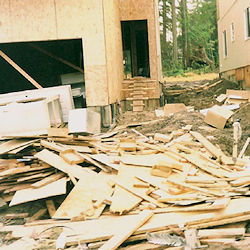Recognized and Foreseeable Hazards
When conducting the worksite analysis, it's important to look for hazards that are generally recognized within the construction industry. Recognized hazards are generally foreseeable on the worksite OSHA will require that these hazards are properly eliminated or controlled.
"Recognized" Hazards
As described in OSHA's Field Operations Manual, recognition of a hazard is established based on industry recognition, employer recognition, or "common sense" recognition criteria.
- Industry Recognition: A hazard is recognized if the employer's industry recognizes it. Recognition by an industry, other than the industry to which the employer belongs, is generally insufficient to prove industry recognition. Although evidence of recognition by the employer's specific branch within an industry is preferred, evidence that the employer's industry recognizes the hazard may be sufficient.
- Employer Recognition: A recognized hazard can be established by evidence of actual employer knowledge. Evidence of such recognition may consist of written or oral statements made by the employer or other management or supervisory personnel.
- Common Sense Recognition: If industry or employer recognition of the hazard cannot be established, recognition can still be established if it is concluded that any reasonable person would have recognized the hazard. This argument is used by OSHA only in flagrant cases. Note: Throughout our courses we argue that "common sense" is a dangerous concept in safety. Employers should not assume that accidents in the worksite result from a lack of common sense.
Knowledge Check Choose the best answer for the question.
3-5. Which type of "recognized" condition does OSHA use only for flagrant cases?
You forgot to answer the question!

